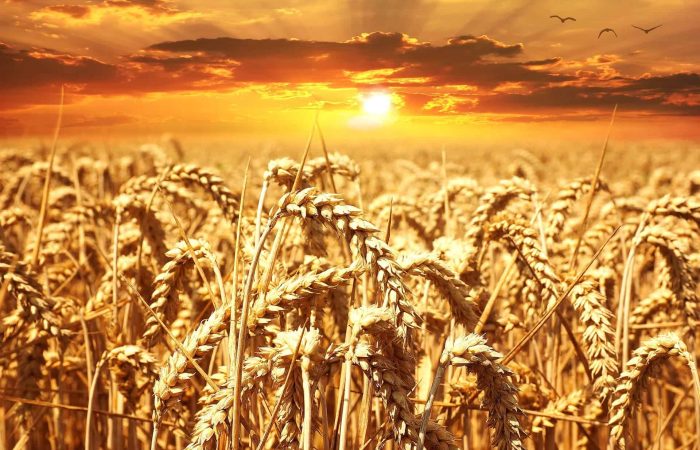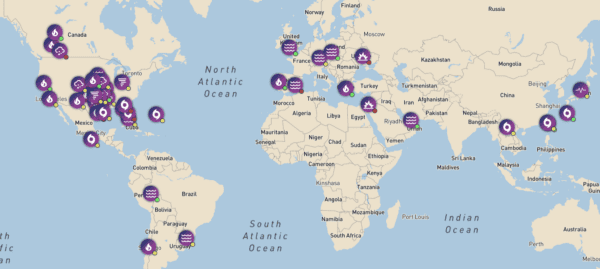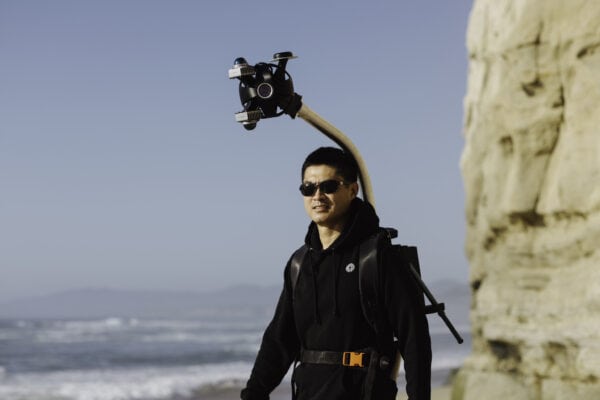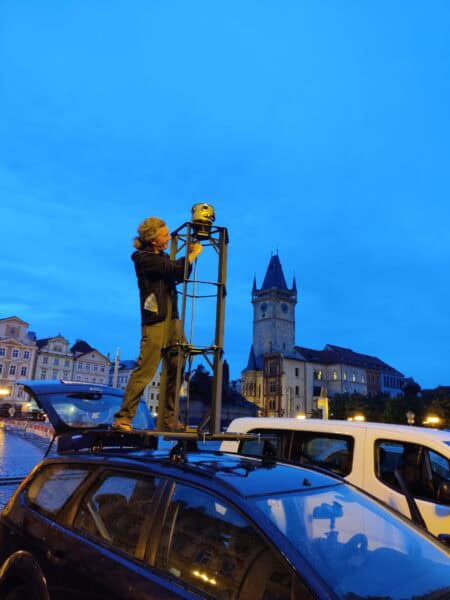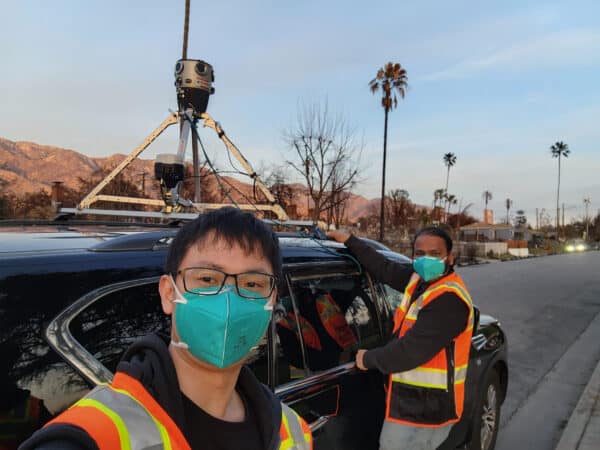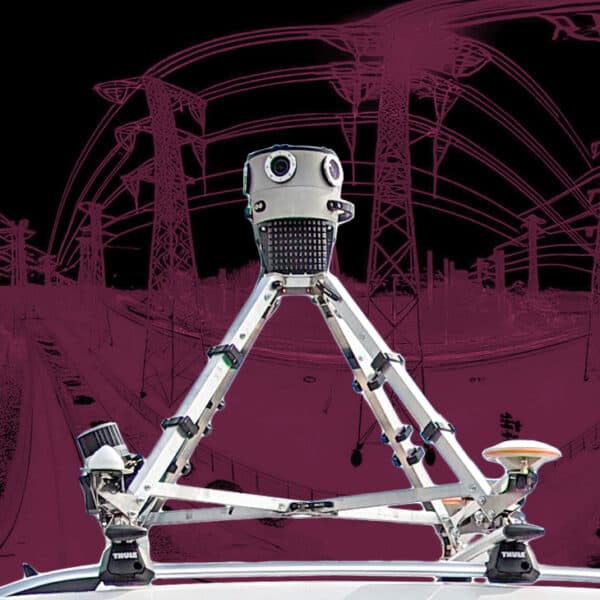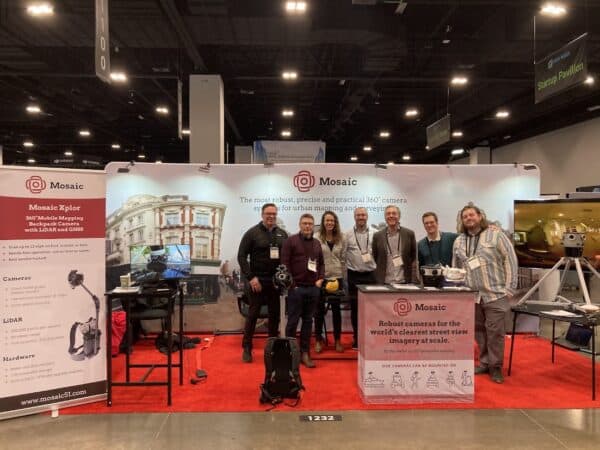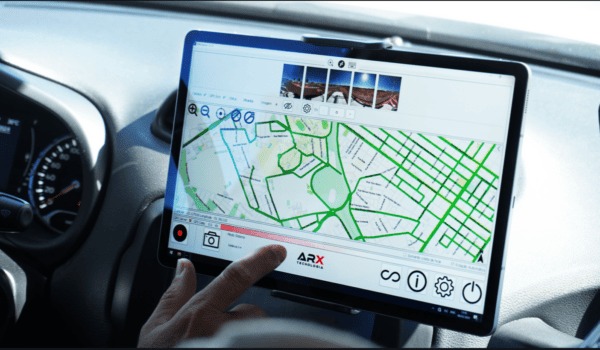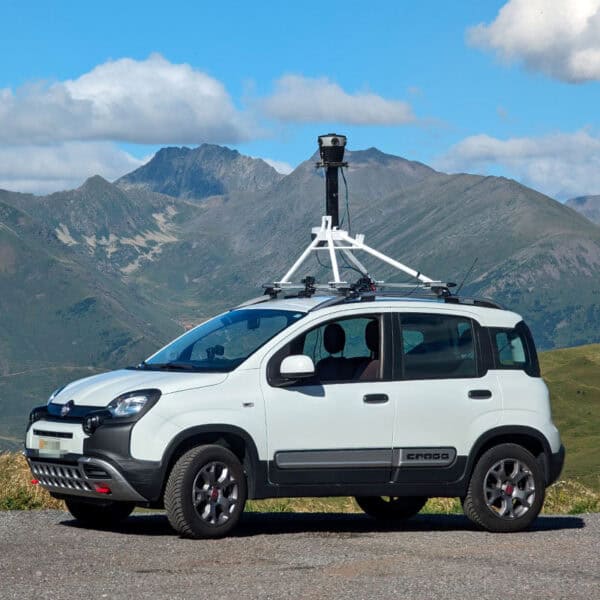Breaking ground: Mosaic 51 is the #1 agriculture camera system for agriculture inspection
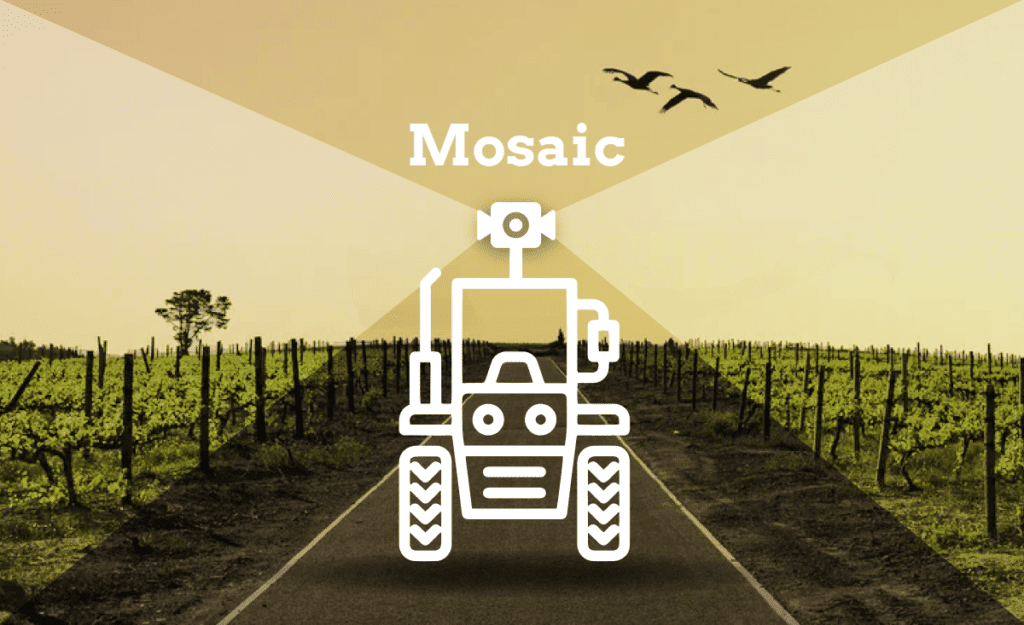
Despite the incredible speeds at which the world is changing, some things have not changed – the need for humans to eat. Even with all that AI and IoT have brought to humankind, we all still need to eat on a daily basis in order to continue making further advances in AI and IoT. What has changed in the field of agriculture is the way in which we farm and the resources that we use.
Previous Agricultural Revolutions
The First Agricultural Revolution happened nearly 10,000 years ago. Our ancestors moved away from hunting and gathering to a more settled, agrarian way of life. That lifestyle persisted for the next 10,000 years, hardly without change. Large portions of the population across the world were farmers. They produced enough food for themselves, their families, and the nearby communities. Rarely were their goods shipped more than a few miles down the road.
The Second Agricultural Revolution occurred in tandem with the Industrial Revolution in the 18th and 19th centuries. New technologies began to take root and caused an immense increase in farm productivity. It was also one of the leading causes of exponential population growth.

The Third Agricultural Revolution, also known as the Green Revolution, was less than 100 years ago. It introduced chemical fertilizers, pesticides, and hybridization. All of which led to an even more drastic flourishing of populations throughout the world.
The Current Agricultural Revolution
The latest advances in agriculture involve AI and IoT. They have incorporated machine learning and data analytics into a sector of our lives that previously was natural and wholly organic. In this newest stage of development, we attempt to use up-to-date and highly precise data to drive our decision-making processes. Our ultimate goal is to operate as cost-efficiently and productively as possible while also being mindful of our environment.
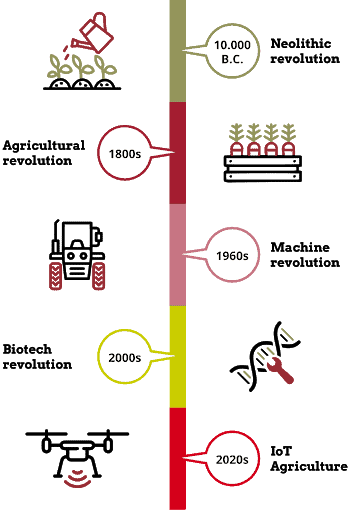
This is no small feat by any means, and several solutions have arisen in the last decade. Those in the agricultural sector have sought solutions by combining various technologies. These mainly consist of cameras for agricultural image gathering alongside sensors such as GPS, LiDAR, and infrared cameras. This melding of images from an agriculture camera system with geospatial data has led to a superior form of data collection, one that is highly sophisticated and precise.
Current Solutions for Agriculture Inspection and Maintenance
One of the most well-known among those are UAVs (unmanned aerial vehicles) or drones. However, while being the most ubiquitous, they are not necessarily the best solution for farmers.
Other systems often implemented are ‘near ground remote sensing systems.’ This is a stationed ground-based surveillance and monitoring system consisting of a mechanical structure, a power supply and control parts, and onboard application components.
Both of these systems share many similarities and aim to accomplish many of the same problems: identify insects, crop diseases, and nutrient deficiencies, as well as take inventory of livestock and crops. However, both have their limitations. Good thing there is something, quite literally, ‘in the middle’ that solves both systems’ flaws.
But before we get into this incredible new solution in agriculture camera systems and smart farming, let’s look at and acknowledge the current uses and benefits of drones and near-ground remote sensing systems in the agricultural sector.
Uses of remote sensing systems in agriculture
Since their advent into mainstream culture, drones have gone from a military device to a recreational toy. They are now also a highly functional form of monitoring and collecting data for many sectors, including agriculture. A study by PriceWaterhouseCooper published in 2017 found that the total market value of drone-powered solutions was estimated at $127.3 billion. Agriculture was the second leading industry at $32.4 billion, following infrastructure.
Due to their easy maneuverability, they have become a popular means of surveying farms’ livestock and vegetation. These remote sensing devices have taken over many tasks in recent decades:
- Livestock inspection: drones can identify ill, pregnant, or injured livestock so farmers can better attend to the ones in need.
- Pest detection and surveillance: drones and stationary near-ground level remote sensing systems are fundamental in detecting, monitoring, and preventing infestations.
- Crop damage assessment and documentation: by capturing images before harmful incidents such as fires, floods, pests, and other natural disasters, farmers have future evidence of land devastation. They can show insurance companies and governmental agencies the evidence when requesting assistance or making a claim.
- Identify disease: crop diseases can quickly pop up and spread throughout acres of land. But now, they can be identified and managed with carefully gathered images, GPS coordinates, and infrared data.
- Analysis of field and soil: UAVs have allowed farmers to analyze larger patches of land to determine the nutrient-rich or nutrient-deficient soils.
- Plant counting and inventory assessment: due to high-quality images paired with advanced algorithms, it is possible to take inventory of fields of crops.
- Estimation of crop heights: a combination of sensors and HD images also makes it possible to monitor and estimate the height of crops. Now, farmers can keep tabs on their growth and maturity rate.
- Monitor water levels: it is possible to identify leaky irrigation pipes or areas that need more water with cameras and sensors mounted on drones.
- Detect crop temperature data: it is possible to detect the temperature of crops with infrared cameras to determine those that are water deficient.
Benefits of data gathered from advanced agriculture camera systems
The data collected with UAVs and near-ground remote sensing systems have helped to advance today’s agricultural industry. Farmers are better prepared and more knowledgeable about the conditions of their livestock and crops. They can make better-informed decisions when deciding where to send their cows to graze, where to water and how much water to give to a particular parcel of land, and which field is in danger of being attacked by a swarm of pests.
The benefits can be summarized into three categories: efficiency, effectiveness, and environmentally friendliness.
Efficiency
Drones, UAVs, and near-ground remote sensing technologies are all much more efficient than humans in capturing and storing data. They can operate more quickly in the case of drones and for longer periods of time in the case of near-ground solutions, and all have the ability to capture and store images, data, and insight for future use.
Effectiveness
Cameras, sensors, and machines provide farmers with both accurate and precise data. Rather than relying on subjective human-gathered data, they can be confident in these tools’ objective data.
One case study found that an agricultural leader using drones accelerated plot-based plant measurements by 2.5x and improved accuracy by 25% compared to hand counting. They were also able to survey full plots instead of sampling 10% to 40% of the field.
Another case study found that the data from remote-powered vehicles led to a 10% increase in crop yields on average.
Environmentally friendliness
Many eco-friendly and environmentally friendly benefits surface through remotely powered images and data collection information.
Efficiency and effectiveness often lend themselves to more ecologically sustainable farming methods. With more accurate knowledge about the current state of their fields, farmers can decide where to properly irrigate, nourish, or protect crops according to the specific needs of individual plants.
Efficiency and effective farming practices also reduce waste on vital resources such as water, nutrients, soil, seeds, and pesticides.
By surveying their land more regularly, they will more quickly identify potential risks and mitigate them with rapid recourse rather than discovering too late.
Ultimately, the goal of the vast majority of farmers is profitability. However, most would argue that profits only come from effective, efficient, and eco-friendly farming methods.
A Better Solution for Agriculture Inspection and Maintenance
While drones and stationary remote sensors have increased farmers’ yields, efficiency, and effectiveness while reducing waste, they have many disadvantages.
The disadvantages of drones in agriculture inspection
- Privacy: it’s quite easy to quickly and unknowingly trespass onto another’s land.
- Legislative uncertainty: there is no strict nor concrete law (in the U.S.) regarding the use of UAVs and their movement. It is difficult to know when one has violated laws or regulations.
- Flight route limitations: there are restrictions on where a drone can fly.
- Safety throughout the operation of drones to people, land, and animals.
- Vulnerable to wild animals.
- Easily hacked: without proper security. Outsiders may hack drones and gather sensitive data.
- Weather dependent: drone batteries are sensitive to moisture, and drones are sensitive to wind speeds.
- Knowledge/skill: you often need a license and training to operate drones.
- Short flight time (often less than ½ hour).
The disadvantages of near-ground level systems in agriculture inspection
- Limitation of movement: these systems are stationary and cannot cover wide expanses of land.
- Durability: they’re mainly for research purposes. Near-ground level systems are often not durable or able to withstand harsh environmental conditions
The one solution for all agriculture inspection and maintenance
A camera for agriculture inspection and management mounted on ground-based rovers is the perfect marriage of the two previously mentioned solutions. The Mosaic 51 is one option for an agriculture camera system. By providing a stronger, more durable solution to drones and a more versatile solution to near-ground-based systems, the Mosaic 51 offers farmers the best camera solution for data collection.
This 360-degree camera consists of 6 12-megapixel image sensors mounted atop a moving vehicle. Typically, a standard car (self-driving cars as well), but also UGVs (unmanned ground vehicles), such as ground rovers, or other farming equipment which can transverse fields.
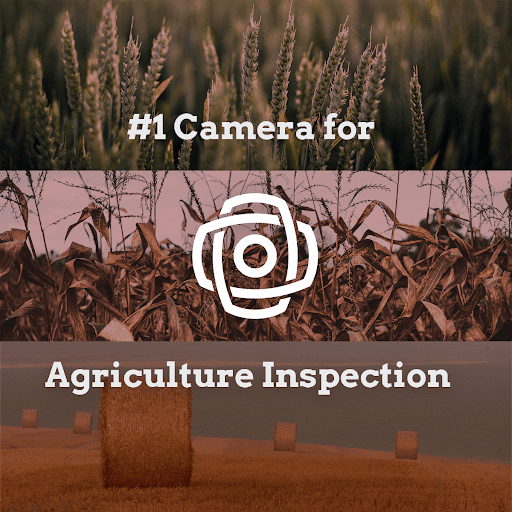
The Mosaic 51
- is a more mobile solution to near-ground remote sensing systems.
- is not hampered by weather, wind, or heat. With its IP64 rating, the industrial-grade housing unit is sealed and water-resistant, making it possible to operate in heavy winds, rain storms, and extreme heat.
- is not a danger to wildlife such as birds. Since the camera is on a ground-based rover or other farming machine, it only covers actively used ground.
- allows for privacy, as the operation of the camera will only take place on the farmers’ land without the concern for crossing boundaries or trespassing on neighboring fields.
- is easy to operate. There is no need to obtain a license or train in order to operate the Mosaic 51.
- is secure. The Mosaic 51 can come equipped with 256-bit encryption out of the box, allowing for full confidentiality and GDPR compliance.
- is not vendor-locked, so farms can migrate to the Mosaic 51 without fear that they are bound to a specific software solution.
- offers the highest quality imaging on the market at 12K resolution on each of the 6 sensors.
- can operate and collect data over nearly 10 hours, with 7fps 12-bit compressed RAW in full resolution.
- can store up to 8TB of data in its USB 3.0 storage.
- has 3D scanning capabilities, which allows for the collection of soil and field analysis data to streamline planning and planting patterns. This helps optimize field irrigation and soil nitrogen levels throughout the crop cycle.
The Mosaic 51 camera is the next step in the development and usage of truly high-performing tools that are making improvements in the agricultural industry as well as many other sectors. Paired with software to create prescription maps and treatment plans, take soil and leaf sampling, and generate vegetation index maps, the future of farming is sure to achieve higher efficiency, efficacy, and ecological standards.

